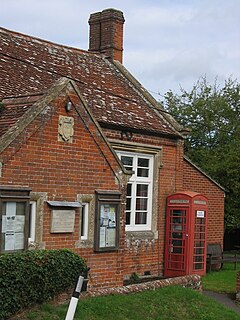| Coulston | |
|---|---|
 Village hall | |
Location within Wiltshire | |
| Population | 133 (in 2021) [1] |
| OS grid reference | ST951541 |
| Unitary authority | |
| Ceremonial county | |
| Region | |
| Country | England |
| Sovereign state | United Kingdom |
| Post town | WESTBURY |
| Postcode district | BA13 |
| Dialling code | 01380 |
| Police | Wiltshire |
| Fire | Dorset and Wiltshire |
| Ambulance | South Western |
| UK Parliament | |
| Website | Parish Council |
Coulston (until 1934 called East Coulston) is a village and civil parish in Wiltshire, England, five miles northeast of the town of Westbury, just north of the B3098 road. The village lies under the north slope of Salisbury Plain and the parish extends south onto the Plain.
Contents
- History
- Notable buildings
- Church
- Pronunciation
- Notable people
- Images
- See also
- References
- External links
The parish has an elected parish council called Coulston Parish Council.
Coulston has a mix of old and new houses, about sixty-five in all. The number of buildings listed as of architectural or historic importance is thirteen (all listed Grade II). [2] There is no shop or surviving public house.


